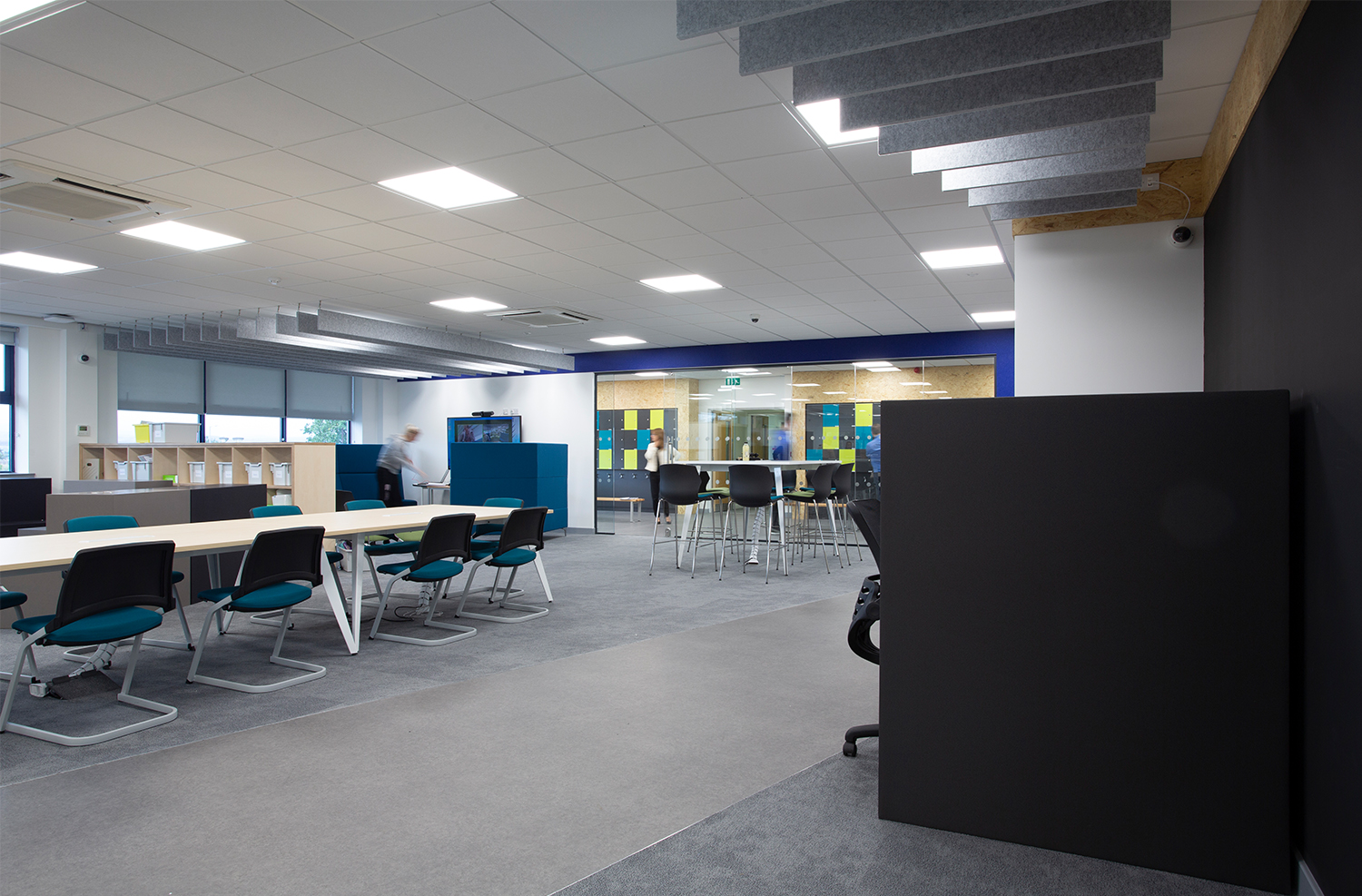
July, 2020
While in the past you may have found creating a stress-free environment simple and straightforward, the COVID-19 pandemic has changed the office environment as we know it. In this blog post, we look at design considerations to reduce stress and how that has changed due to COVID-19.
1. Hot desking
Allowing employees to sit wherever they feel like may have once given them a sense of freedom and control, but is now perceived my many employees as a serious cross-contamination risk. Hot desking and collaborative work zones must be replaced with set desks and working areas, to minimise employee contact and to limit employee movements around an office. There is a strong argument to say this change is not really a bad thing, as there is some debate around the negative effect hot desking may have had on employee’s anyway – not really that much evidence of reducing stress!
2. Personalisation
Similarly to the point above, many interior designers may have once left a lot of office and desk space blank, encouraging employees to bring in personal items and belongings that helped them to feel more peaceful and at home. Due to the pandemic, however, personal items in an office must be limited to essentials only and stored for the cleaning processes to take place. Many designers are now turning to plants to decorate an office space, to create a peaceful environment without including employee personal belongings.
3. Light
A ground-breaking study found that employees who are situated near a window get an average of 46 minutes more of sleep a night than an employee who has a windowless space in the office. We also found a great article on how morning light reduces stress at work. In the past, designers may have created collaborative workspaces around windows, but this is no longer possible. Designers will have to look at other ways to increase natural light within an office, such as by installing mirror or skylights. For more ideas.
4. Wayfinding
Whereas employees may have once rolled their eyes at a one-way system within an office, to limit the spread of COVID-19, one-way systems and social distancing markers have become essential. To ensure employees do not become unduly stressed trying to remember routes around an office, social distancing tiles and mats can be used to ensure employees have complete clarity about where they should be walking and standing, and they do not get stressed about trying to navigate their way around the office.
The RIBA Journal has a very thought provoking article on the office of the future is worth a read. It looks into how office design has been impacted by Covid-19 and provides additional insights on how design considerations to reduce stress can be implemented – a revolution that can have a positive outcome.